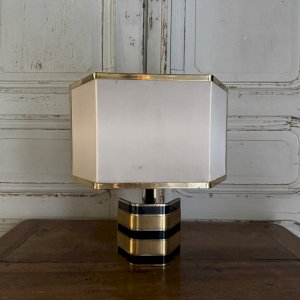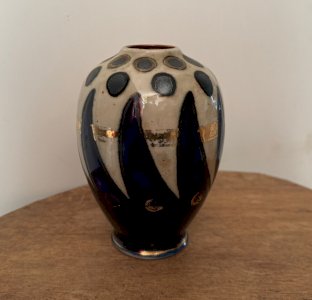- Sell Now
- Home
-
FURNISH
All STORAGE FURNITURE • Wardrobe • Chests of drawers, Chiffonnier • Sideboard • Shelves, Bookshelves • File cabinet • Sewing Furniture • Bar cabinet • TV Stand • Trunk, Chest TABLE & BEDSIDE TABLE • Dinner Table • Coffee table, side table, end table & Bedside • Console, Pedestal table & Selette • Serving Table, Trolley • Card Table • Draper's counter & table SEAT • Sofa • Armchair • Chair • Stool • Bench • Daybed • Beanbag & Footrest • Deckchair & Outdoor DESK, SECRETARY, DRESSING TABLE GARDEN LOUNGE BEDDING • Bed • Bedhead • Cradle, Moses basket CRAFT FURNITURE, WORKSHOP • Workbench • Stool, Ladder, Step • Easel & Trestle SCREEN PIANO
-
DECORATE
All TO PUT • Sculpture, Statuette • Vase & Planter • Dame Jeanne, Bonbonne & Flacon • Bridal globe, Dome • Pin tray, Ashtray • Candlestick & Candle • Photo frame • Stone, Fossil, Mineral • Earth Globe MIRROR WALL DECORATION • Painting • Engraving & Illustration • Poster • Tapestry • Wall Frame • Plate & Sign • Juju Hat & Wall Paniel • Mask • Hunting Trophy • Other object to hang CLOCK, PENDULUM & ALARM CLOCK ARRANGEMENT • Jar, Box & Case • Basket, Wastebasket & Crates • Magazine Rack & Vinyl Holder • Display & Spinner • Coat hook & Coat rack • Furniture Valet & Mannequin • Towel Holder • Suitcase & Travel Bag • Bottle Rack • Umbrella holder BATHROOM OFFICE • Mail holder • Bookends • Sulphide & Paperweight • Stationery FIREPLACE ACCESSORIES HOBBIES • Vintage Sport • Music • Vintage device • Smoking Item • Militaria, Ancient weapon • Miniature Vehicle • Game, Playing Cards • Collection object & Curiosity BIRD CAGE RELIGION, SPIRITUALITY
- TEXTURE
- ILLUMINATE
-
ACCOMODATE
All TABLE & SERVING • Plate • Silverware • Knife Holder • Glass • Bowl, Mug, Cup • Bowl, Ramekin & Cup • Dish, Cup & Salad Bowl • Tray, Basket & Server • Table Mat • Pitcher, Carafe, Bottle, Tea & Coffee Jug • Ice Bucket • Salt & Pepper shakers, Oil & Vinegar shakers • Sugar and jam maker • Gravy boat • Butter dish • Egg cup • Terrine OLD BALANCE CUTTING BOARD GRINDER CASSEROLE, SAUCEPAN & PAN KITCHEN UTENSIL & ACCESSORY
- TINKER
- KIDS
- Jewelry & Accessories
Login
Description
Mahogany clock from Balthazard, gilded bronze, cherubs, enamel dial H6573 Here is a 19th century clock, it comes from the prestigious house of Balthazard in Paris. The first models of lyre clocks date back to the beginning of the 18th century. The success of the lyre clock was very important under Louis XVI, this present lot derives from typical models which were available in numerous versions and materials. The Sèvres factory lists in its archives around thirty clocks sold between 1786 and the beginning of the 19th century, mainly in dark blue or “beautiful blue”. Several copies are kept at the Cognac Jay museum, the Louvre as well as the Sèvres ceramic museum and the Victoria and Albert Museum in London. Prestigious bronze makers such as Thomire and Gouthière also made versions. This exceptional clock with three dials combines admirable work of chasing the bronzes which betrays great mastery and immense sensitivity. Let us also note the remarkable work of the enamel. More elaborate and elaborate than the usual lyre clocks, this present lot is a true masterpiece of watchmaking. An analogous clock, lyre-shaped with three dials, surmounted by a mask of Apollo, the movement by Raguet-Lépine, is illustrated in A. Chapiro, Jean-Antoine Lepine, Paris, 1998. The watchmaker who signed the dial “Balthazard” of the lyre could be the son of the watchmaker Henry Balthazar, Noël Balthazar received in 1717. A second hypothesis supposes that it would be Louis-Charles Balthazar received in 1768. The Balthazars in Paris are among these successive dynasties of watchmakers like Le Noir or Dugrand-Mesnil. It has a superb blue and white enamel dial, decorated with small stars. The bronzes are of quality, fine carving, pretty gilding. The upper part is removed, we find two cherubs holding a flame. The feet are claw feet, we find an Antique decor. It is a mahogany wood. The movement is very particular, there is a movement at the top indicating the days and months. The clock is sold as is, unserviced, uncleaned, untested. We point out that the pendulum does not hold, note wear and scratches, gaps and traces on the gilding, the left rear foot is damaged, cracks in the wood on the face. Our numerous photos allow you to appreciate the quality of the object. For the condition, please detail the photos. Feel free to zoom in. The photos are an integral part of the description. Dimensions: Height: 101 cm Width: 35 cm Depth: 18 cm Dial Ext. diameter. : 13 cm Int. diameter. : 10.5 cm D: 1344440 I remain at your disposal for any questions.
Réf :
#248707
Related Products
Comments
Maison Balthazard mahogany clock gilded bronze cherubs enamel dial H6573
12 800€
44000 Nantes
Ce site contient des liens d’affiliation pour lesquels je peux recevoir une compensation.
Description
Mahogany clock from Balthazard, gilded bronze, cherubs, enamel dial H6573 Here is a 19th century clock, it comes from the prestigious house of Balthazard in Paris. The first models of lyre clocks date back to the beginning of the 18th century. The success of the lyre clock was very important under Louis XVI, this present lot derives from typical models which were available in numerous versions and materials. The Sèvres factory lists in its archives around thirty clocks sold between 1786 and the beginning of the 19th century, mainly in dark blue or “beautiful blue”. Several copies are kept at the Cognac Jay museum, the Louvre as well as the Sèvres ceramic museum and the Victoria and Albert Museum in London. Prestigious bronze makers such as Thomire and Gouthière also made versions. This exceptional clock with three dials combines admirable work of chasing the bronzes which betrays great mastery and immense sensitivity. Let us also note the remarkable work of the enamel. More elaborate and elaborate than the usual lyre clocks, this present lot is a true masterpiece of watchmaking. An analogous clock, lyre-shaped with three dials, surmounted by a mask of Apollo, the movement by Raguet-Lépine, is illustrated in A. Chapiro, Jean-Antoine Lepine, Paris, 1998. The watchmaker who signed the dial “Balthazard” of the lyre could be the son of the watchmaker Henry Balthazar, Noël Balthazar received in 1717. A second hypothesis supposes that it would be Louis-Charles Balthazar received in 1768. The Balthazars in Paris are among these successive dynasties of watchmakers like Le Noir or Dugrand-Mesnil. It has a superb blue and white enamel dial, decorated with small stars. The bronzes are of quality, fine carving, pretty gilding. The upper part is removed, we find two cherubs holding a flame. The feet are claw feet, we find an Antique decor. It is a mahogany wood. The movement is very particular, there is a movement at the top indicating the days and months. The clock is sold as is, unserviced, uncleaned, untested. We point out that the pendulum does not hold, note wear and scratches, gaps and traces on the gilding, the left rear foot is damaged, cracks in the wood on the face. Our numerous photos allow you to appreciate the quality of the object. For the condition, please detail the photos. Feel free to zoom in. The photos are an integral part of the description. Dimensions: Height: 101 cm Width: 35 cm Depth: 18 cm Dial Ext. diameter. : 13 cm Int. diameter. : 10.5 cm D: 1344440 I remain at your disposal for any questions.
Réf :
#248707
 English
English  Français
Français 

























